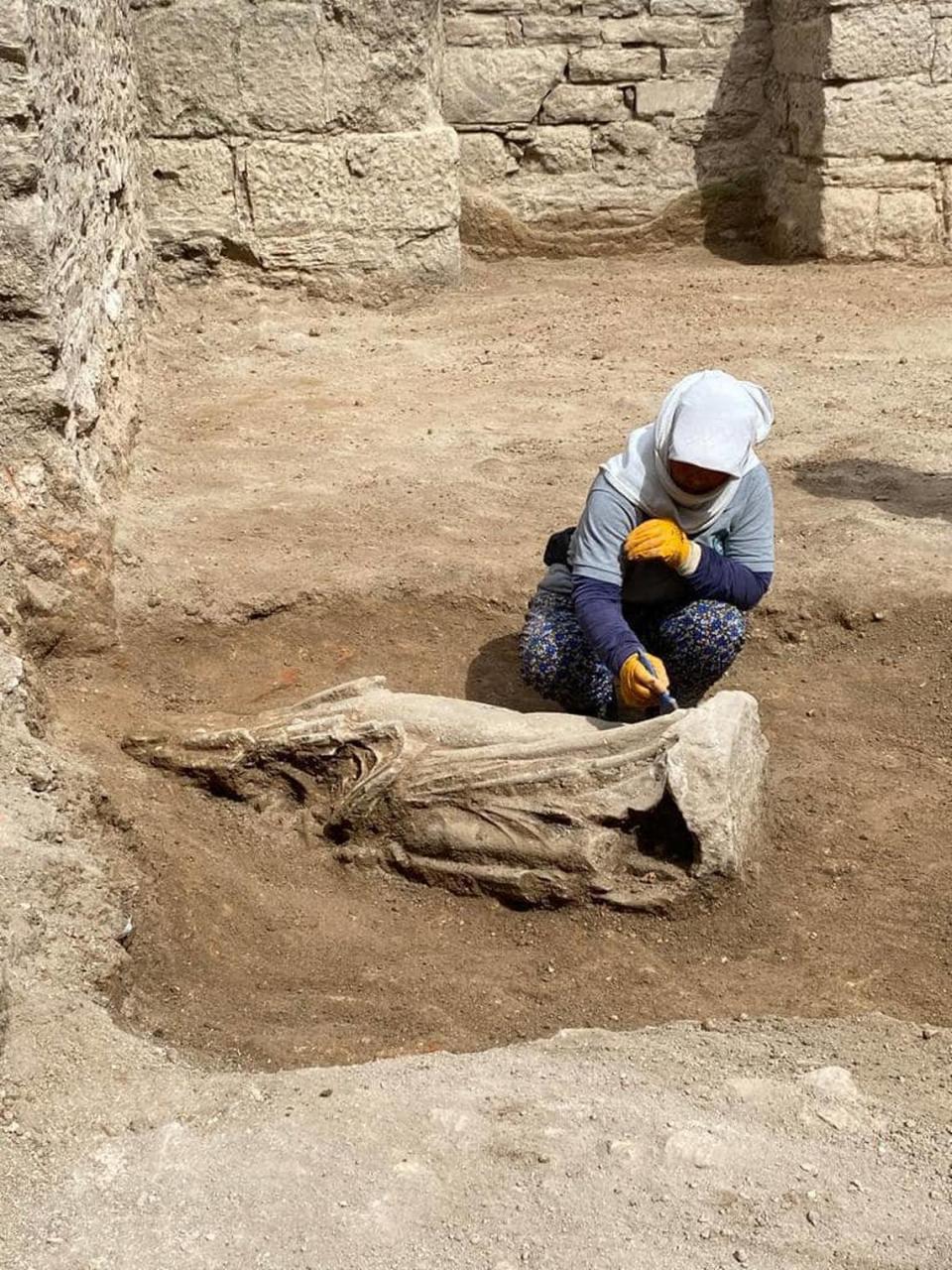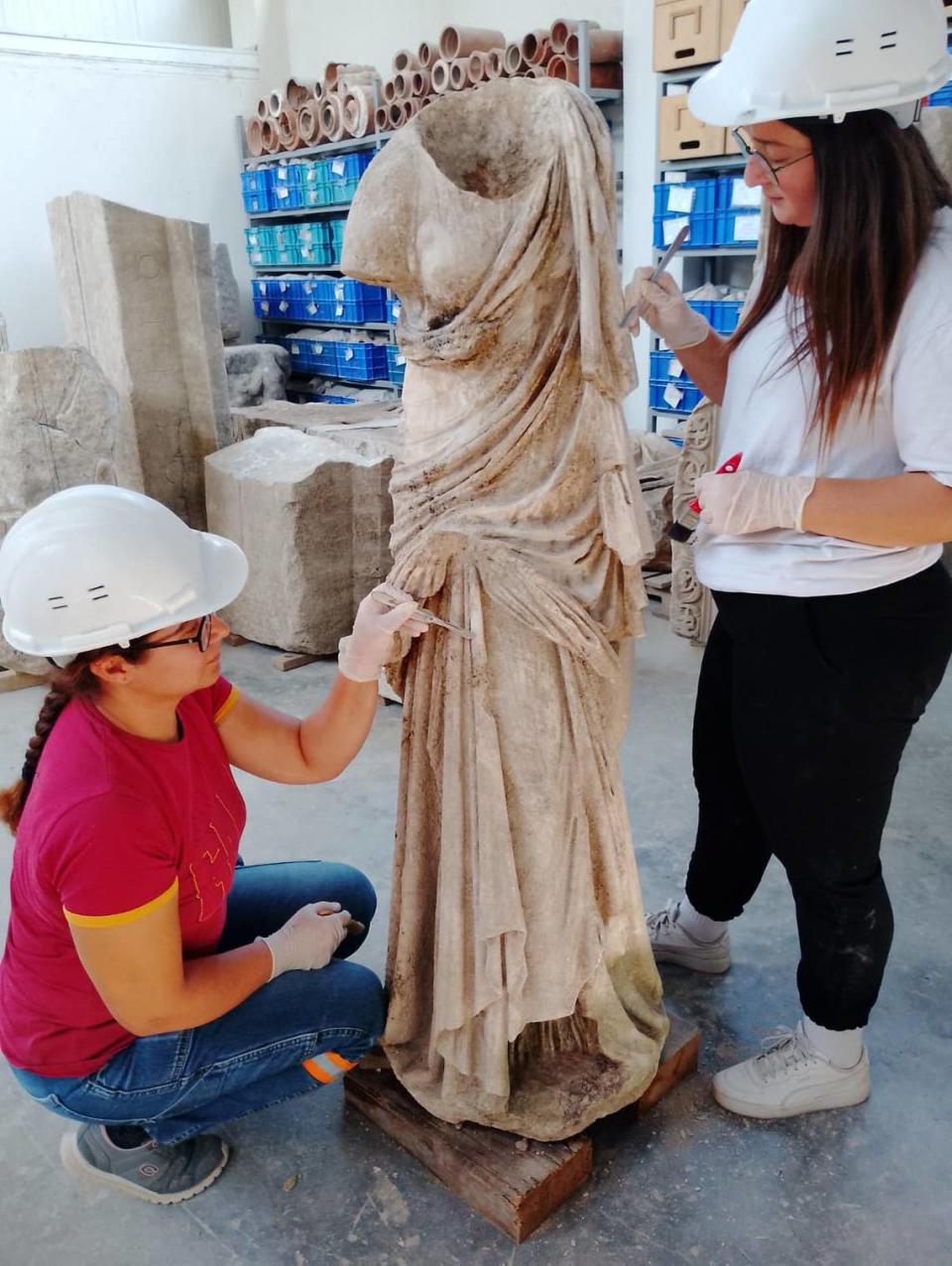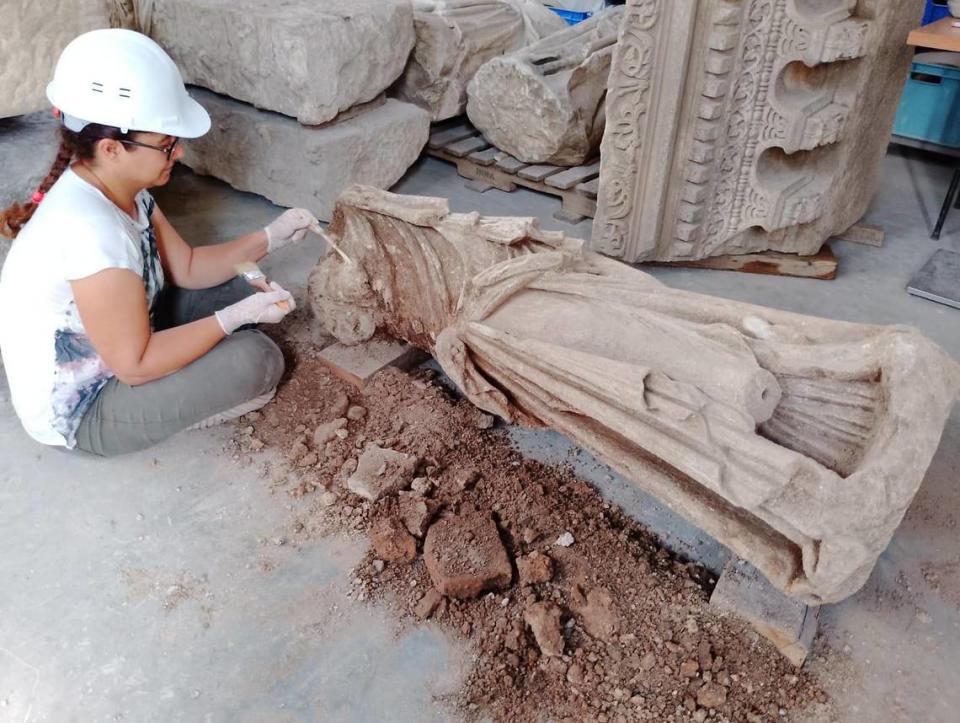Experts could only find copies of this famous 2,175-year-old sculpture — until now
More than 2,000 years ago, an artist chipped away at a large piece of stone, crafting a depiction of a figure from Greek mythology known to be the daughter of Zeus.
Since then, the original sculpture of the dancing muse has been lost. That is until now.
Archaeologists in Turkey were exploring the remains of the ancient city of Stratonikeia when they discovered the original body and platform of the statue, according to a Dec. 7 news release from the Ministry of Culture and Tourism of the Republic of Turkey. The statue was unearthed from the ruins of a Roman bath.

Photos show the large statue wearing a cloak and missing its head and arms.


The statue was crafted by the famous sculptor Philiskos, who was known during the second century B.C., officials said. Until now, only copies of the statue made during the Roman era have been discovered.
Experts said the piece depicts one of the muses, which in Greek mythology were the daughters of Zeus and the Greek goddess of memory, Mnemosyne.
Stratonikeia, which is about 35 miles southeast of Istanbul, was first inhabited around 1500 B.C., according to the United Nations Educational, Scientific and Cultural Organization. In 130 B.C. it became part of the Roman Empire.
The settlement is known “as the city of eternal love and gladiators,” organization experts said. Gladiators were trained and held demonstrations in Stratonikeia, and many lived in the city after they retired. Stratonikeia is also known for “what might be the largest gymnasium in antiquity,” built during the second century B.C., according to the organization.
Archaeologists are currently working to restore the statue. It will then be exhibited at the Muğla Museum, officials said.
Google Translate and Facebook Translate were used to translate a release from the Ministry of Culture and Tourism of the Republic of Turkey.
‘Huge’ art gallery found carved near Colorado cliffs. See the centuries-old scenes
Unusual settlement remains — including 800-year-old jewelry — found in Poland forest
Thousands of coins — many in ancient pouches — found in 1,500-year-old Egypt city

